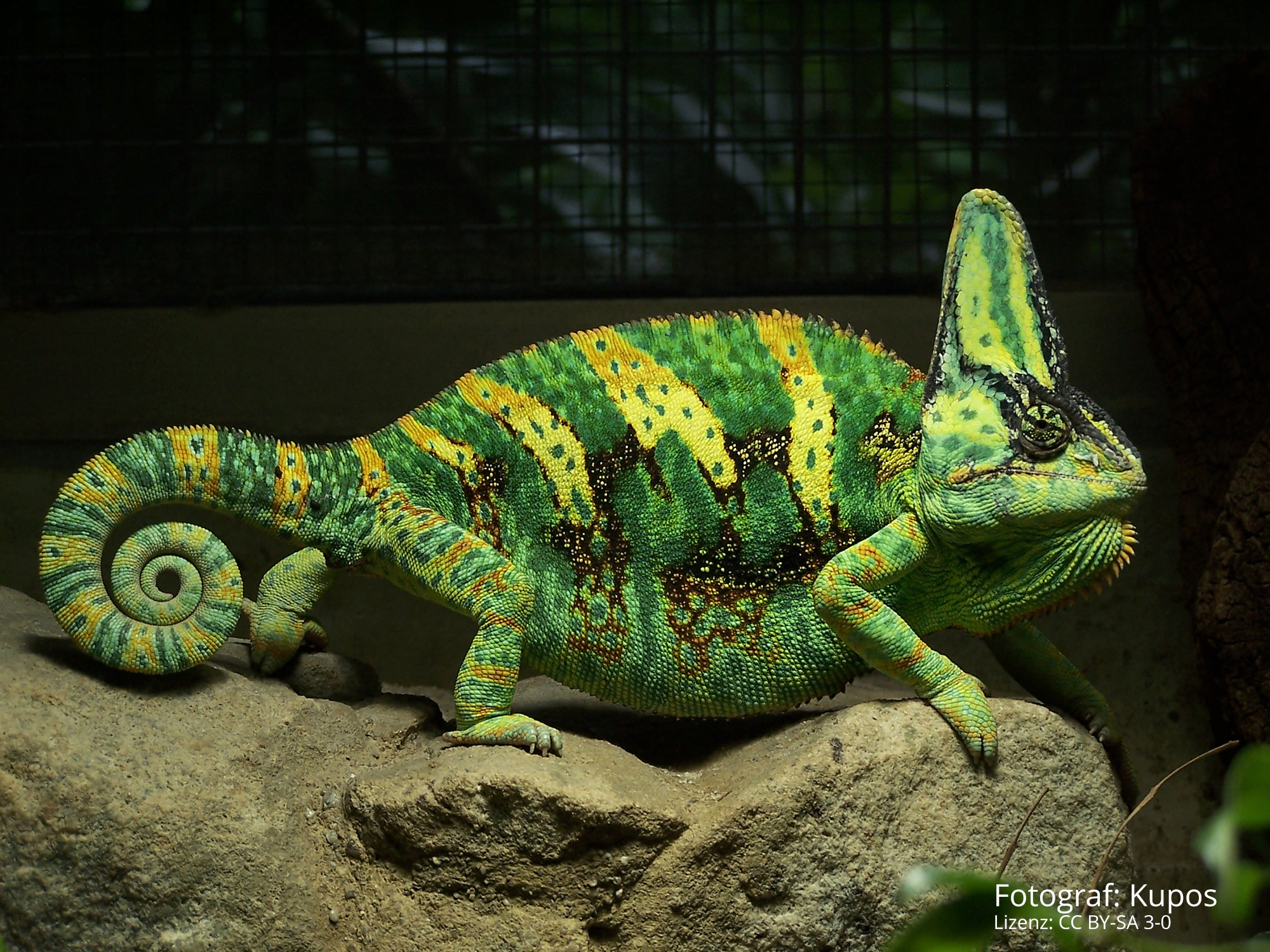A Yemeni biologist at Al Saeed University recently took measurements on two different reptile species to compare their forelimbs and hindlimbs structurally and functionally. Both the Hadramaut Agama (Acantocercus adramitanus) and the Veiled Chameleon (Chamaeleo calyptratus) occur in the same habitats in Yemen, but they inhabit different microhabitats and move differently. While the agama lives mainly on the ground and in low bushes, the Veiled Chameleon is a pure tree dweller.
For the study, 10 specimens of each species were taken from the wild in Taiz. The head-torso length of the agamas ranged from 52 to 125 mm, and that of the chameleons from 90 to 200 mm. The animals were killed and the limbs were removed, stained, and then measured.
The structure of the limbs was basically the same in both species, but the hands and feet were clearly different. The Hadramaut Agama has five carpal bones, whereas, in the Veiled Chameleon, the distal carpal bones 2,3, and 4 are fused. Both species lack distal tarsal bones 2 and 5. The Veiled Chameleon lacks the sesamoid ossicles, which are variable in the agama. As expected, the long bones of the Veiled Chameleons were almost equally long on the forelimbs and hindlimbs, while in the agamas the forelimbs were significantly shorter than the hindlimbs. Overall, all long tubular bones were longer in the chameleon than in the Hadramaut Agama.
The skeletal characteristics of limb of two endemic lizard species (Acantocercus adramitanus and Chamaeleo calyptratus) in Yemen
Yaser H.A. Obady
Al-Saeed University Journal of Humanities and Applied Sciences 06 (1) 2023: pp. 188-210
DOI: 10.17161/randa.v30i1.18614


